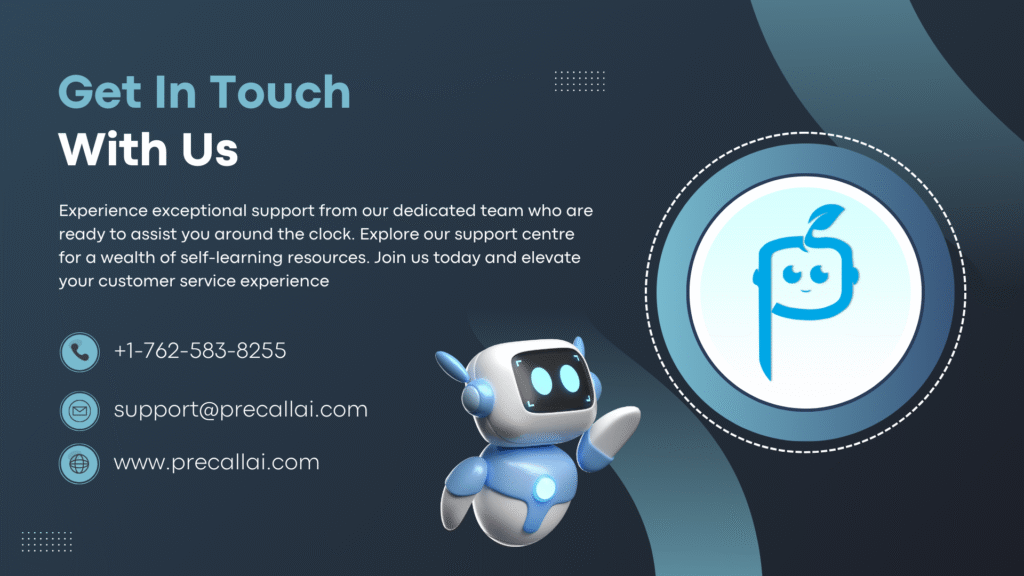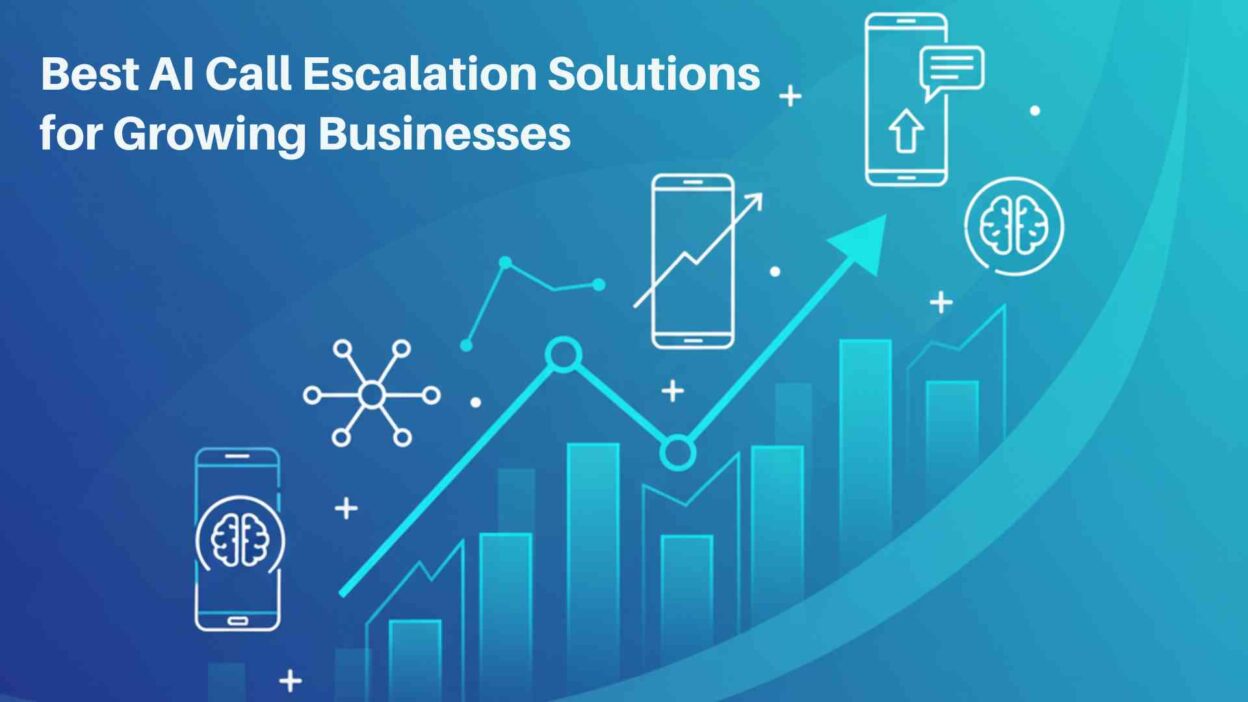Introduction to Intelligent Call Management
TL;DR Customer service defines business success in today’s competitive marketplace. Growing companies face increasing call volumes that strain support resources. AI call escalation software for businesses transforms how organizations handle customer communications efficiently.
Table of Contents
Traditional call routing systems lack the intelligence to make nuanced escalation decisions. Human agents spend valuable time on calls that automated systems could resolve. Smart escalation ensures the right expertise addresses each customer inquiry immediately.
Modern AI solutions analyze caller intent, sentiment, and urgency automatically. These systems learn from historical data to improve decision accuracy continuously. Businesses reduce costs while improving customer satisfaction through intelligent automation.
Understanding AI Call Escalation Technology
What Is AI-Powered Call Escalation?
AI escalation software determines when automated systems should transfer calls to humans. The technology analyzes conversation context, customer emotion, and problem complexity. Smart routing connects customers with the most qualified available agent instantly.
Machine learning algorithms identify patterns indicating escalation needs before frustration builds. Natural language processing understands customer requests beyond simple keyword matching. This intelligence creates seamless experiences that feel personalized and responsive.
AI call escalation software for businesses operates continuously without breaks or performance degradation. Systems handle thousands of simultaneous calls with consistent quality. Scalability allows companies to grow without proportional increases in support staff.
How Automated Escalation Differs from Traditional IVR
Legacy interactive voice response systems follow rigid menu trees. Customers navigate multiple layers before reaching appropriate assistance. Frustration mounts as people repeat information at each transfer point.
AI-powered systems understand natural speech without forcing menu navigation. Customers explain problems conversationally instead of pressing numbers. The system routes calls correctly from initial contact without tedious transfers.
Intelligent escalation considers factors beyond caller menu selections. Customer history, account status, and expressed sentiment inform routing decisions. This contextual awareness creates dramatically better experiences than traditional approaches.
Key Technologies Powering Smart Escalation
Natural language understanding enables systems to comprehend customer requests accurately. Speech recognition converts spoken words into text for analysis. Sentiment analysis detects emotional states, indicating urgency or frustration levels.
Predictive analytics forecast which calls require immediate human attention. Machine learning models improve continuously from every customer interaction. Integration capabilities connect escalation systems with CRM and ticketing platforms.
Real-time decision engines evaluate multiple factors simultaneously within milliseconds. Priority scoring algorithms balance customer needs against agent availability. Workflow automation triggers appropriate actions based on escalation decisions.
Benefits of Implementing AI Escalation Solutions
Reduced Operational Costs
Automated handling of routine inquiries significantly lowers staffing requirements. AI call escalation software for businesses resolves common questions without human involvement. Companies redirect labor costs toward complex value-added activities.
Average handling time decreases when customers reach appropriate resources immediately. Agents spend less time on misrouted calls or gathering basic information. Efficiency gains translate directly to cost savings and improved profitability.
Scalability eliminates the need to hire proportionally during growth phases. Systems handle volume spikes without additional staff during peak seasons. This flexibility protects margins while maintaining service quality standards.
Enhanced Customer Experience
Customers appreciate quick resolution without navigating complex phone menus. Smart routing eliminates frustrating transfers between multiple agents. First-call resolution rates improve dramatically with intelligent escalation systems.
Personalized service feels authentic when systems leverage customer history appropriately. VIP customers receive priority treatment automatically based on account status. Context-aware routing demonstrates that the company values customer time.
Reduced wait times improve satisfaction scores measurably across all customer segments. Emotional intelligence prevents small issues from escalating into major complaints. Proactive escalation catches problems before customers become frustrated enough to leave.
Improved Agent Productivity
Agents handle calls matching their expertise and authorization levels. This specialization increases confidence and improves resolution efficiency. Job satisfaction rises when agents feel capable of helping every assigned customer.
Automated systems handle repetitive questions that bore experienced agents. Human talent focuses on complex situations requiring judgment and empathy. This division maximizes the value of both human and artificial intelligence.
AI call escalation software for businesses provides agents with comprehensive context before calls connect. Preparation time decreases when relevant information appears automatically. Agents deliver better service with less effort per interaction.
Scalability for Growth
Systems accommodate business expansion without architectural overhauls or replacements. Cloud-based solutions add capacity instantly during unexpected demand surges. Geographic expansion happens seamlessly with distributed infrastructure support.
Growth doesn’t require linear increases in support team headcount. Automation handles the expanding base load while human agents tackle exceptions. This economic model enables sustainable scaling that protects profit margins.
Integration with existing business systems ensures consistent customer experiences. Data flows seamlessly between escalation software and other enterprise applications. Unified platforms prevent information silos that damage customer relationships.
Essential Features to Look For
Intelligent Call Routing Capabilities
Advanced routing considers dozens of variables simultaneously when making decisions. Customer value, problem type, agent skills, and current workload all factor in. Multi-dimensional optimization ensures the best possible outcome for each call.
Skills-based routing matches customer needs with agent expertise areas. Language preferences connect callers with fluent speakers automatically. Time zone awareness facilitates follow-up scheduling and callback coordination.
Queue management algorithms minimize wait times while balancing agent workloads fairly. Priority systems ensure urgent situations receive immediate attention. Dynamic routing adapts to changing conditions in real-time continuously.
Sentiment Analysis Integration
Real-time emotion detection identifies frustrated customers requiring immediate escalation. Vocal stress patterns indicate rising anger before customers explicitly complain. Proactive intervention prevents negative experiences that damage brand reputation.
AI call escalation software for businesses adjusts routing based on detected emotional states. Upset customers connect with specially trained agents skilled in de-escalation. Positive interactions continue with automated systems when satisfaction remains high.
Historical sentiment tracking reveals patterns indicating systemic issues requiring attention. Aggregate emotion data guides product improvements and process refinements. Customer feedback becomes actionable through quantified sentiment measurement.
CRM and Helpdesk Integration
Seamless data exchange between escalation software and customer databases enables personalization. Agents see complete customer histories instantly when calls connect. This context eliminates redundant questions that frustrate already stressed customers.
Automatic ticket creation documents escalated calls without manual data entry. Status updates flow between systems, maintaining consistent information everywhere. Integration reduces administrative overhead while improving data accuracy.
Unified reporting combines call metrics with broader customer service analytics. Leadership gains comprehensive visibility into support operations performance. Data-driven decisions improve when information from all systems consolidates automatically.
Customizable Escalation Rules
Business-specific logic determines when and how escalation occurs appropriately. Different product lines, customer segments, and situations require unique handling. Flexible rule engines adapt to organizational needs without custom coding.
Escalation thresholds adjust based on time of day, staffing levels, and business priorities. Rules evolve as companies learn what works best for their customers. Testing different approaches reveals optimal configurations for specific contexts.
AI call escalation software for businesses allows non-technical staff to modify rules easily. User-friendly interfaces make adjustments without requiring developer involvement. This agility accelerates optimization and reduces change management costs.
Real-Time Analytics and Reporting
Live dashboards display current system performance and queue status continuously. Supervisors identify problems immediately and respond before customers complain. Real-time visibility enables proactive management instead of reactive firefighting.
Historical reports track trends in call volume, escalation rates, and resolution times. Performance metrics guide staffing decisions and training priorities. Data reveals opportunities for improving both automated and human-handled interactions.
Customizable reports address specific stakeholder questions and concerns. Executive summaries highlight business impact while detailed reports support operational improvements. Self-service reporting empowers teams to answer their own questions quickly.
Top AI Call Escalation Software Solutions
Enterprise-Grade Platforms
Large-scale solutions handle millions of calls monthly with robust reliability. Enterprise platforms offer extensive customization and integration capabilities. These systems support complex organizational structures with multiple departments and locations.
Dedicated support teams assist with implementation and ongoing optimization. Service level agreements guarantee uptime and performance standards. Premium pricing reflects comprehensive features and enterprise-level support commitments.
Security and compliance features meet strict regulatory requirements for sensitive industries. Encryption, access controls, and audit trails protect customer information. Healthcare, finance, and government organizations choose enterprise solutions for regulatory assurance.
Mid-Market Solutions
Growing businesses benefit from solutions that balance capability and affordability. Mid-market platforms provide core features without enterprise complexity or cost. These systems scale appropriately for companies with dozens to hundreds of agents.
AI call escalation software for businesses at this level offers excellent value propositions. Implementation timelines are shorter than enterprise deployments. Companies become productive quickly without lengthy customization projects.
Cloud-based delivery models eliminate infrastructure investments and maintenance burdens. Subscription pricing aligns costs with business growth naturally. Upgrades happen automatically without service interruptions or migration projects.
Small Business Options
Startups and small companies access AI escalation through affordable entry-level products. Basic features handle common scenarios without overwhelming simplicity. These solutions prove that smart escalation isn’t exclusive to large organizations.
Quick setup processes get small teams operational within days or weeks. Intuitive interfaces require minimal training for staff to use effectively. Limited customization keeps complexity manageable for resource-constrained teams.
Pay-as-you-grow pricing models accommodate tight budgets and uncertain forecasts. Companies pay only for actual usage without large upfront commitments. This risk reduction encourages adoption among smaller businesses exploring automation.
Industry-Specific Solutions
Specialized platforms address unique requirements in healthcare, finance, and retail. Industry-specific features and compliance capabilities justify focused solutions. Deep domain expertise accelerates implementation and improves outcomes.
Healthcare solutions integrate with electronic health records and scheduling systems. HIPAA compliance features protect sensitive patient information automatically. Medical terminology understanding ensures accurate routing of clinical inquiries.
Financial services platforms address security and regulatory requirements specific to banking. Integration with account systems enables secure verification and transaction processing. Fraud detection capabilities identify suspicious calls requiring special handling.
Comparing Leading Providers
Feature Comparison Matrix
Different vendors emphasize different capabilities based on target markets. Some excel at natural language processing, while others focus on integration breadth. Comparing features against specific requirements identifies the best fit.
Standard features appear across most platforms at similar capability levels. Differentiation occurs in advanced features like predictive analytics and AI quality. Unique capabilities often justify price premiums for companies needing them.
AI call escalation software for businesses varies significantly in ease of use and configuration flexibility. Some platforms require technical expertise, while others serve business users. Evaluate implementation complexity against internal technical resources available.
Pricing Models and Total Cost
Subscription pricing typically bills per agent seat or call volume processed. Some vendors charge based on usage minutes or resolved interactions. Understanding pricing structures helps predict costs accurately as businesses scale.
Implementation fees add significantly to first-year costs for complex deployments. Training, data migration, and customization require additional investments. Budget for ongoing maintenance, support, and upgrade costs beyond initial purchase prices.
Hidden costs include integration expenses and premium support contracts. Calculate the total cost of ownership over multiple years for accurate comparisons. Cheaper solutions sometimes cost more long-term through limitations or poor reliability.
Integration Capabilities
Compatibility with existing technology stacks determines implementation feasibility. Pre-built connectors for popular CRM and helpdesk systems accelerate deployment. API availability enables custom integrations for unique business systems.
Vendor ecosystems with partner integrations expand functionality beyond core features. Marketplace offerings add specialized capabilities without custom development. Strong integration support indicates mature platforms with broad adoption.
Data synchronization reliability prevents inconsistencies that confuse customers and agents. Real-time updates ensure information accuracy across all connected systems. Poor integration quality undermines the benefits of otherwise excellent escalation software.
Customer Support and Training
Vendor support quality dramatically affects implementation success and ongoing satisfaction. Responsive support teams resolve issues quickly, minimizing business disruption. Self-service resources empower teams to solve common problems independently.
AI call escalation software for businesses requires proper training for maximum effectiveness. Comprehensive onboarding programs accelerate time-to-value for new customers. Ongoing education keeps teams current with new features and best practices.
Community forums and user groups provide peer support and shared learning. Active communities indicate healthy ecosystems with engaged user bases. Learning from other companies’ experiences shortens optimization timelines.
Implementation Best Practices
Assessing Your Current Call Operations
Document existing call flows, volumes, and pain points before selecting solutions. Understanding the current state informs requirements and success criteria. Baseline metrics enable measuring improvement after implementation accurately.
Analyze historical data to identify peak times, common issues, and escalation triggers. This information guides the configuration of intelligent routing rules. Knowing what problems to solve focuses implementation efforts effectively.
Stakeholder interviews reveal different perspectives on call handling challenges. Agents, supervisors, and customers all notice different issues. A comprehensive understanding prevents implementing solutions that miss critical requirements.
Planning Your Escalation Strategy
Define clear escalation criteria based on business goals and customer needs. Determine which situations require human involvement versus automated resolution. Strategy balances customer satisfaction against operational efficiency goals.
Map customer journeys to identify optimal escalation points in conversations. Early escalation prevents frustration but reduces automation benefits. Delayed escalation saves costs but risks customer dissatisfaction.
AI call escalation software for businesses works best with well-designed fallback procedures. Plan for system failures, unusual situations, and edge cases. Contingency planning ensures customer service continuity under all conditions.
Configuring Rules and Workflows
Start with simple rules and add complexity gradually based on results. Over-complicated initial configurations create maintenance nightmares and confusion. Iterative refinement based on real performance data optimizes outcomes.
Test rules thoroughly before activating in production environments. Simulation tools reveal unintended consequences before affecting real customers. Staged rollouts limit exposure while validating configuration effectiveness.
Document all rules and their rationale for future reference and training. Configuration knowledge shouldn’t reside solely in individuals’ heads. Proper documentation facilitates ongoing optimization and team transitions.
Training Staff on New Systems
Comprehensive training covers both technical operation and strategic purpose. Agents understanding the “why” behind automation embrace changes more readily. Change management addresses concerns and builds confidence in new tools.
Hands-on practice with realistic scenarios builds proficiency before live deployment. Role-playing exercises prepare agents for various escalated call situations. Comfort with technology translates to better customer service delivery.
Ongoing training keeps skills current as systems evolve and improve. Regular refreshers reinforce proper usage and introduce new features. Investment in education maximizes return on technology investments.
Optimizing Escalation Performance
Monitoring Key Metrics
Track escalation rate percentages to understand automation effectiveness over time. High rates might indicate overly sensitive triggers or system limitations. Low rates could mean missing situations requiring human attention.
Average handling time for escalated calls reveals efficiency improvements. AI call escalation software for businesses should reduce the time agents spend gathering context. Decreasing handle times indicate successful implementation and optimization.
First-call resolution rates measure whether escalations reach appropriate resources immediately. Multiple transfers frustrate customers, even with intelligent routing. High resolution rates validate routing accuracy and agent capability matching.
Continuous Improvement Strategies
Regular reviews of escalation decisions identify patterns and improvement opportunities. Some escalations prove unnecessary upon analysis, revealing configuration issues. Others highlight gaps in automated handling capabilities.
A/B testing different escalation rules reveals optimal configurations empirically. Controlled experiments prevent guessing about what works best. Data-driven optimization produces better results than intuition alone.
Machine learning models improve automatically from accumulating interaction data. Active learning accelerates improvement through targeted feedback on uncertain decisions. Human oversight ensures AI improvements align with business objectives.
Handling Edge Cases
Unusual situations inevitably arise that automated rules don’t anticipate. Effective systems provide escape hatches for atypical scenarios. Agent override capabilities prevent automation from trapping frustrated customers.
Document edge cases and incorporate learnings into future configurations. Exception handling improves as systems encounter and adapt to rare situations. Continuous refinement eliminates blind spots in automated decision-making.
AI call escalation software for businesses should fail gracefully when encountering the unexpected. Default behaviors ensure customers always reach help even when systems struggle. Safe failure modes protect customer relationships during technical difficulties.
Balancing Automation and Human Touch
Some customers prefer human interaction regardless of efficiency considerations. Offering choice respects preferences while encouraging automation adoption. Segmentation identifies customer groups benefiting most from each approach.
High-value customers might warrant immediate human connection regardless of issue complexity. VIP treatment justifies reduced automation efficiency for important relationships. Strategic escalation considers customer lifetime value in routing decisions.
Emotional situations require human empathy that AI cannot yet replicate convincingly. Death notifications, serious complaints, and crises need real people. Recognizing automation limitations prevents damage from inappropriate automation.
Security and Compliance Considerations
Data Protection Requirements
Call recordings and transcripts contain sensitive personal and business information. Encryption protects data at rest and in transit from unauthorized access. Strong security prevents breaches that damage customer trust and business reputation.
Access controls ensure only authorized personnel can view customer information. Role-based permissions limit data exposure to the necessary staff only. Audit trails track who accessed what information when for accountability.
Data retention policies comply with legal requirements while minimizing storage costs. Automatic deletion removes information no longer needed for business purposes. Compliance demonstrates respect for customer privacy and regulatory obligations.
Industry-Specific Compliance
Healthcare providers must ensure HIPAA compliance in all patient interactions. AI call escalation software for businesses in the medical field requires specific safeguards. Business associate agreements formally establish vendor compliance responsibilities.
Financial institutions face strict regulations governing customer communications and data handling. PCI DSS compliance protects payment card information during calls. Recording restrictions apply to certain financial transactions and account activities.
International operations must comply with GDPR and other regional privacy laws. Cross-border data transfers require specific legal mechanisms and protections. Global compliance complexity demands careful vendor selection and configuration.
Call Recording and Consent
Legal requirements for call recording vary by jurisdiction and industry. Some regions require two-party consent, while others allow single-party recording. Compliance necessitates understanding applicable laws in all operating locations.
Disclosure statements inform callers about recording at conversation start. Clear notification prevents legal issues while maintaining transparency. Opt-out procedures accommodate those uncomfortable with recording.
Secure storage protects recordings from unauthorized access or tampering. Retention schedules align with legal requirements and business needs. Proper management of recorded calls prevents liability and supports quality improvement.
Future Trends in AI Call Escalation
Predictive Escalation Capabilities
Advanced systems will predict escalation needs before customers explicitly request assistance. Behavioral patterns and conversation trajectory indicate emerging frustration. Proactive intervention prevents negative experiences before they fully develop.
Predictive analytics identifies accounts at risk of churn based on interaction patterns. Early warning systems enable proactive outreach, preventing customer losses. AI call escalation software for businesses evolves from reactive to predictive approaches.
Machine learning models forecast call volume and escalation rates for staffing optimization. Predictive capacity planning ensures adequate resources during anticipated peaks. Accurate forecasting reduces costs while maintaining service levels.
Enhanced Natural Language Understanding
Conversational AI continues improving its ability to understand complex requests. Systems will handle increasingly sophisticated dialogs without human escalation. The boundary between automated and human-handled calls shifts continuously.
Multilingual capabilities expand to support more languages and dialects naturally. Real-time translation enables agents to serve customers speaking different languages. Language barriers diminish as technology bridges communication gaps.
Contextual understanding deepens as systems better grasp nuance and implication. Sarcasm, humor, and cultural references become less problematic for AI. More human-like comprehension reduces unnecessary escalations to human agents.
Integration with Emerging Technologies
Voice biometrics enable secure authentication without tedious verification questions. Identity confirmation happens seamlessly during natural conversation. Security improves while customer friction decreases dramatically.
Augmented reality could provide visual assistance during escalated technical support calls. Agents see what customers see for more effective troubleshooting. Visual context supplements voice communication for complex problem resolution.
AI call escalation software for businesses will integrate with IoT devices for proactive support. Connected products report issues automatically, triggering appropriate responses. Predictive maintenance prevents problems before customers notice them.
Frequently Asked Questions
What is AI call escalation software?
AI escalation software automatically determines when calls need human agent involvement. The technology analyzes conversations and routes calls intelligently. Businesses improve efficiency while maintaining excellent customer service quality.
How much does AI escalation software cost?
Pricing varies widely based on features, call volume, and vendor. Small business solutions start around $50 monthly per agent seat. Enterprise platforms cost thousands monthly, depending on scale and complexity.
Can AI replace human customer service agents?
AI handles routine inquiries, but humans remain essential for complex situations. The technology augments human capabilities rather than replacing them entirely. Optimal approaches combine artificial and human intelligence strategically.
How long does implementation take?
Simple implementations are complete within weeks, while complex deployments take months. Timeline depends on customization requirements and integration complexity. Cloud-based solutions typically deploy faster than on-premise alternatives.
What ROI can businesses expect?
Most companies see positive ROI within 6-12 months of implementation. Cost savings from automation offset software and implementation expenses. Improved customer satisfaction provides additional value beyond direct savings.
Is AI escalation software secure?
Reputable vendors implement robust security to protect customer data. Encryption, access controls, and compliance certifications ensure proper protection. Businesses should verify security measures before selecting vendors.
How does sentiment analysis work?
Sentiment analysis examines voice patterns, word choice, and speech characteristics. Algorithms detect emotions like frustration, anger, or satisfaction. AI call escalation software for businesses uses these insights for routing decisions.
Can systems integrate with existing software?
Most platforms offer integrations with popular CRM and helpdesk systems. APIs enable custom integrations with proprietary business applications. Integration capabilities vary significantly between vendors and products.
What happens if the AI makes mistakes?
Quality systems include human override options for incorrect routing. Continuous learning improves accuracy over time from mistakes. Proper configuration and monitoring minimize errors affecting customers.
Do customers prefer AI or human agents?
Preferences vary based on situation complexity and individual traits. Many customers prefer AI for simple questions answered quickly. Complex or emotional issues warrant human empathy and judgment.
Read More: Master Sales Funnel Conversion Stages in 5 Simple Steps
Conclusion

Intelligent call management transforms customer service operations for growing businesses. AI call escalation software for businesses delivers measurable improvements in efficiency and satisfaction. The technology represents a competitive advantage in customer experience delivery.
Selecting the right solution requires careful evaluation of features, pricing, and compatibility. Business needs and technical requirements should drive vendor selection decisions. Implementation success depends on proper planning, configuration, and training.
Continuous optimization maximizes value from escalation technology investments over time. Regular monitoring and refinement keep systems performing at peak efficiency. Organizations committed to improvement see compounding benefits year over year.
The future of customer service combines artificial and human intelligence optimally. AI handles what it does best while humans contribute unique empathy. This partnership creates experiences neither could deliver alone effectively.
Growing businesses cannot afford to ignore AI escalation technology any longer. Competition adopting these tools gains significant operational advantages. Early adopters position themselves for sustainable growth and market leadership.
Start evaluating AI call escalation software for businesses today for your organization today. The right solution is waiting to transform your customer service operations. Tomorrow’s successful businesses are implementing these technologies today.






[…] Read More: Best AI Call Escalation Solutions for Growing Businesses […]
[…] Read More: Best AI Call Escalation Solutions for Growing Businesses […]
[…] Read More: Best AI Call Escalation Solutions for Growing Businesses […]